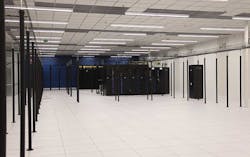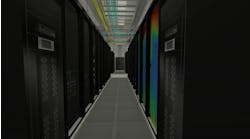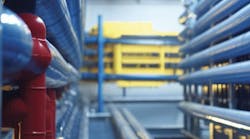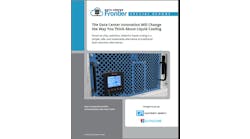And that’s because today, all the things data centers do for us can best be summed up in a recent movie title: Everything Everywhere All At Once. Data centers operate in the largest cities and, increasingly, in smaller, more rural areas, wherever and whatever form factor a customer needs. They connect to subsea cables and help analyze agricultural activity. They serve driverless vehicles and help the Webb Telescope mission compile and analyze astonishing images of our universe. They help deliver mass amounts of data provided by cloud services as well as the information a fourth grader needs to complete their homework assignment. In 2022, there are very few human or machine tasks that don’t utilize services provided from a data center. And to deliver these services where, when, and how they’re needed, today’s data centers are taking new footprints and form factors, building to specifications from hyperscalers, cable landing stations, IoT service providers, machine learning specialists, and scores of other industries virtually everywhere around the globe, and beyond.
In short, data centers today are doing everything, everywhere, and doing it all at once. In the movie by that name, the main character learns that the multiverse consists of billions of universes, each one spawned when any decision is made, anywhere. So, in addition to her life on Earth, running a small laundromat and struggling through a tax audit, she also exists in billions of other worlds, doing other jobs, living other lives, and facing very different challenges in her life. Saying much more would give away a lot of spoilers but the truth is, data centers have evolved and leapt forward over the years, until today many data center structures and functions would be almost unrecognizable to the teams who managed enterprise data centers in the mainframe era.
Just thirty years ago, data center managers weren’t thinking about sustainability. They were telling programmers to conserve bytes in their data and their code because a 4GB hard drive might be as big as a standard office desk and cost USD $75,000. They tended to use equipment from just a single vendor because multi-vendor solutions led to a lot of finger-pointing and glacially slow repair times whenever problems occurred. Network communications were typically low-speed and proprietary to one vendor or another since TCP/IP wasn’t an option.
But those data centers, whatever their size, were usually built by the enterprise itself, in response to specific IT decisions, and introducing change or progress of any kind could be painful, drawn-out process.
Fast forward to 2022, data center providers could not survive with a one-size-fits-all approach. All types of customers need all types of services in all types of places. And data centers need to develop and build the solutions that suit the needs of those disparate customers. But even each type of customer is evolving and requires flexible, adaptable, responsive data center services. Cloud providers used to have maybe two major, massive data center complexes, but now they have data centers around the globe, with different capacities to suit the audience they’re trying to serve. Video streaming, gaming, machine learning, SaaS providers, and almost every other industry in the world, have undergone tremendous technical, network, and architectural changes over the past decade and data centers had to adapt quickly in response.
Building data centers to suit the changing needs of customers is crucial to enabling innovation, expansion, and efficiency. A right-sized data center is more likely to offer a better PUE, for example, even allowing room for future build-out as business growth demands. Building a data center in the optimal location can promote sustainable solutions that work in those markets and help the facility – and the networks and applications inside – deliver services and information to the targeted audience more quickly. And designing the footprint to match a customer’s unique needs, from hyperscale to EV charging, can help drive innovation, both at the data center level and for customers themselves.
Small, large, near, far, hubs or spokes, data center providers must be more responsive to customer needs. At the same time, they also have to continue to push innovation, sustainability, and efficiency for data center infrastructure around the globe. The movie is a fantasy, but for data centers, everything everywhere all at once is a perfect description of what they do for their customers.
This article was written by Phillip Marangella, CMO of EdgeConneX, a global data center provider focused on driving innovation. Contact EdgeConneX to learn more about their data center design strategy.






